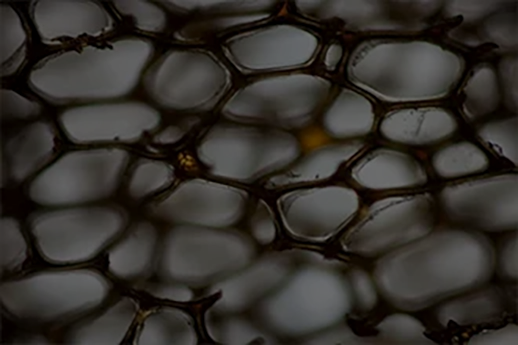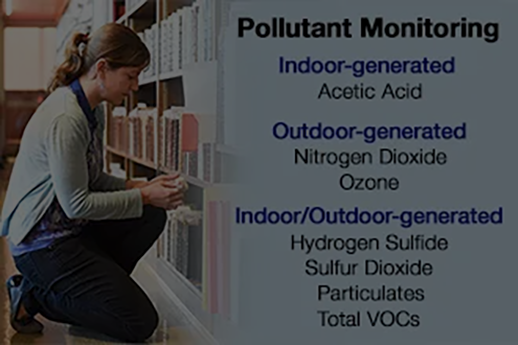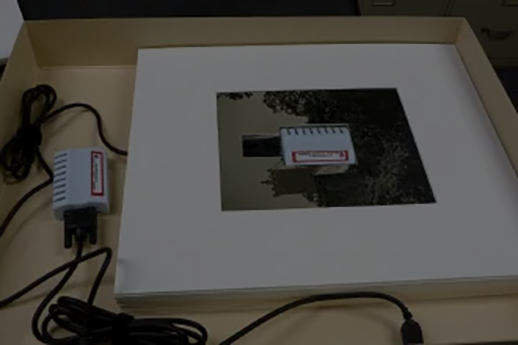Collections Environmental Monitoring

Collections Environmental Monitoring
- RIT/
- Image Permanence Institute/
- Research/
- Collections Environmental Monitoring
IPI environmental research initiatives focus on creating tools that help cultural institutions monitor and analyze environmental data to make informed decisions about how to improve the preservation quality of storage environments. Monitoring and controlling temperature and relative humidity (RH) in collection spaces is essential to providing adequate preservation conditions for collections. Recommendations for storage temperature and RH levels are periodically re-examined following the latest advancements in preservation science, and in recent years have been further informed by improved data-gathering methods, and greater interest in sustainability issues. In the 21st century, there has been a shift in thinking from static environmental management in cultural institutions – that is one in which institutions aim to achieve the same temperature and RH levels in collections spaces year-round – to dynamic environmental management in which conditions are allowed to vary within safe ranges, particularly seasonally.
Monitoring alone will not improve preservation environments or the longevity of collections. Environmental management includes analysis and interpretation of the preservation quality of the environmental conditions recorded and the implementation of improvements as necessary. Maintaining an optimal balance of the slowest rate of collection decay, lowest energy cost, and best practice operation of HVAC systems requires an ongoing commitment to monitoring, analysis, and management. IPI’s web-based application eClimateNotebook® is the essential tool for environmental management in collections and provides graphing, analyzing, and archiving of environmental data collected from a variety of compatible temperature and relative humidity dataloggers.
1.9B
Data Points
IPI's eClimateNotebook® has processed and analyzed over 1.9 billion data points for thousands of institutions worldwide.
3k+
eClimateNotebook Users
IPI's eClimateNotebook® is the only environmental management software supported by preservation specialists and research scientists.
60+
Countries
Institutions in over 60 countries use IPI’s tools to monitor their collection environments.
Resources
IPI’s Guide to Sustainable Preservation Practices for Managing Storage Environments

This guidebook introduces the fundamentals of defining an optimal and sustainable preservation environment. It outlines the basics of what you need to know to accurately document the storage environment and establish sustainable preservation practices. Funding provided by the National Endowment for the Humanities, Division of Preservation and Access, Education & Training Grant Program.
IPI's Preservation Metrics
IPI’s Preservation Metrics transform temperature and relative humidity data into quantitative numerical measures of collection risk. Each metric evaluates the quality of environmental conditions into a single value representing the degree of risk for a particular form of material deterioration including chemical change in organic objects, dimensional change (or mechanical damage), the potential for biological decay (or mold risk), and moisture-induced corrosion. IPI's Preservation Metrics provide a quick, automated analysis of environmentally-induced deterioration and allow collection stewards to accurately and objectively determine how well a storage area is performing for collection preservation, and to assess how well one environment is performing compared to another. Metrics can flag potential problems and document the impact of changes or adjustments made to improve the quality of a preservation environment.
Download Context, Development, and Intent: An Introduction to the IPI Preservation Metrics
eClimateNotebook®
Web-based environmental data management software designed to help museums, libraries, and archives document, analyze, and improve the storage environment for long-term preservation. Easily evaluate the preservation quality of your storage environments with metrics that calculate the rate of natural aging, the risk of mechanical damage, and the risk of mold. Available at various subscription levels depending on institutional size. eClimateNotebook is compatible with a range of dataloggers capable of converting or producing data as a CSV file. IPI has a partnership with Onset, maker of HOBO dataloggers, which are used in a wide range of collecting institutions. eClimateNotebook subscribers can save 5% off the price of HOBO monitoring products that are compatible with eClimateNotebook by using promotional code eClimateNotebook5 at the time of purchase from Onset. Visit the HOBO/eCNB compatible equipment page* for more information. A portion of the proceeds from these sales will be returned to IPI to support our mission.
*Note: This link will take you to the Onset website, which is not controlled or owned by RIT and which may have different policies with respect to use, content, and privacy. RIT is not responsible for the content of that website or for Onset’s use of the information you provide. Once on the Onset website, you will be given the opportunity to purchase MX1101, MX1104, UX100-003, and UX100-011A loggers, the MX Gateway (MXGTW1), RX2105-900, RXW-THC-B-900, RXW-TMB-1-900, RXW-TMB-6-900 RXW-RPTR-B-900 and SD-TEMP temperature sensors (1 ft, 6 ft, 20 ft, and 50 ft). For every purchase made by you, as a result of the use of this link, RIT will receive a portion of the proceeds.
Dew Point Calculator
This tool is designed to calculate and visually present the relationship between temperature, relative humidity and dew point. These calculations are used to evaluate the preservation quality of the environment based on four types of material decay—natural aging or chemical decay, the risk of mechanical damage, the potential for mold growth or for metal corrosion.











